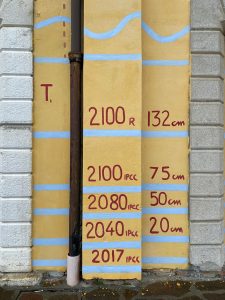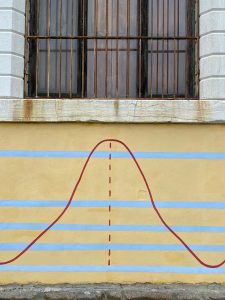Restored is the artwork ‘Sea Level Rise,’ created by the artist Andreco in 2017, located in Fondamenta Santa Lucia, Venice. On the facade of the Venice railway station, overlooking the Grand Canal and Piazzale Roma, the lines and numbers representing sea levels that could be reached in the coming decades have become visible once again.
Five years ago, the artist Andreco drew them. The mural, the first on the Grand Canal, is accompanied by a large installation, standing six meters tall, dedicated to the resilience of the delicate lagoon ecosystem. The artwork is an expression of the relationship that can be established between art and science to address the urgent issues of climate change, presenting itself as an artistic interpretation of scenarios produced by scientific research. “‘Sea Level Rise’ originated from the research project ‘Art&Business,’ through which different artists, employing various techniques and styles, can come into contact with entrepreneurs and managers, collaborating to create works of art,” explains Fabrizio Panozzo, professor at Ca’ Foscari and coordinator of the project, which over the years has produced about thirty artistic interventions in collaboration with Venetian companies. These innovative processes require overcoming the traditional concepts of philanthropy, patronage, and sponsorship, inviting companies to directly participate in the creation of artworks, also considering their impact on the social and environmental context.
Andreco, artist and researcher (holding a Ph.D. in environmental and territorial engineering), will once again make the level lines visible on the 19 spans of the building on the Grand Canal. The blue lines, visible from the vaporetto with the right lighting or while walking along the Fondamenta, narrate one of the most feared impacts of climate change. Among the lines, there are formulas, symbols, and key acronyms in the world of climate science, such as the increasingly well-known ‘parts per million’ (ppm) used to measure the concentration of carbon dioxide in the atmosphere. The sculpture will once again host an herbarium of native plants accustomed to coping with tides on sandbanks or dunes, which currently defend the lagoon from erosion, store carbon dioxide, offer a habitat for other species, but in a few decades may struggle to keep up with the rising sea level. (ANSA).













